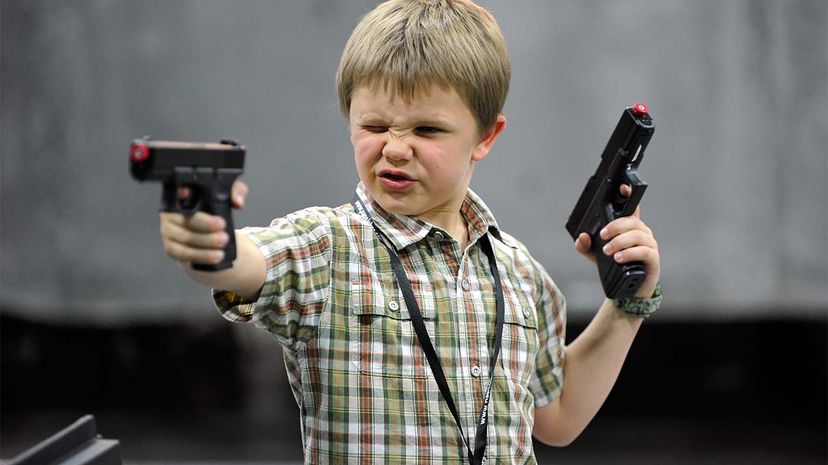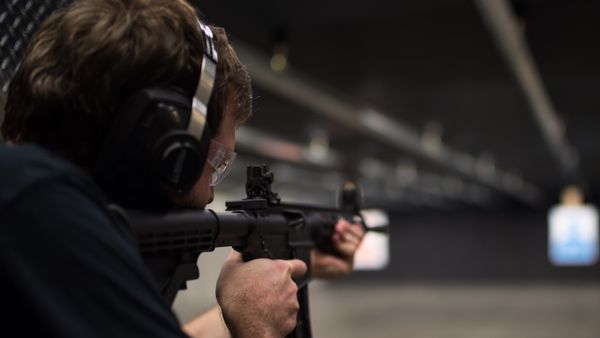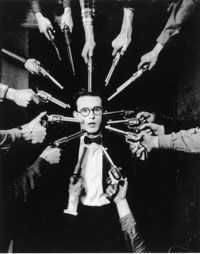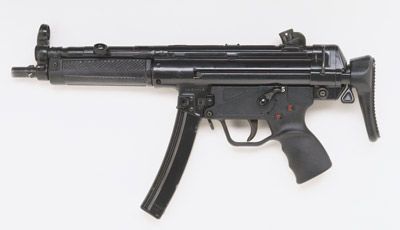After a recent school shooting in Indiana, a reader's letter to the Indianapolis Star voiced a similar sentiment. "Children should not have even cap pistols or toy guns to play with because it teaches the wrong lesson," he wrote. And here is a 2017 Huffington Post article from Wendy Kennar, a former teacher, who explains "Why Our Family Doesn't Allow Toy Guns."
At least one retailer has already stopped selling some types of toy guns. In February, when Walmart announced that it would raise the purchase age for firearms at its stores to 21, the company also said that it would remove from its website items "resembling assault-style rifles," including toys. (Walmart stopped selling actual "modern sporting rifles," including the AR-15, back in 2015.)
For all the anxiety and outrage it stimulates, there's relatively little scientific research on the effect that playing with toy guns has upon children. And although some studies suggest it may be linked to aggressive behavior in childhood, no clear connection has been established between childhood play with toy guns and adult attitudes or propensity for violence. Two psychologists who've done research on children and toy guns think that parenting is a much more important indicator of aggressive behavior.
Charles W. Turner, a psychologist on the staff of the Oregon Research Institute, has more than 40 years of experience conducting treatment and prevention research on children, adolescents and young adults with behavior problems. Back in the mid-1970s, he and colleague Diane Goldsmith published one of the earliest papers on the subject, in which they compared a group of children who played with toy guns to another group who played with toy airplanes, and kids who played with other toys. All were observed for signs of antisocial behavior, such as aggression or rule-breaking.
"The purpose of the airplanes was to control for the fact that you're introducing a novel toy," Turner explains. "Is it the novelty of the toy leading to the acting out, or whether it's something specific about the gun?"
Turner and Goldsmith found that toy guns produced a "reliably higher" rate of antisocial behavior than the average of the toy airplanes and the other toys, though the toy airplanes also increased the rate of kids misbehaving as well.
But today, Turner, who moved on from what he calls "hypothetical studies" to studying actual young offenders, cautions against reading too much into his early work. From a practical standpoint, he says, "it would be hard to look at whether playing with guns as a child affected attitudes as an adult."
Based on his own work as well as that of other researchers, he suspects that "playing with guns as a child is one small part of a bigger picture of what leads to adult aggressive behavior. It's a small, nearly trivial part." He puts more weight on other influences, such as how a family relates to a child and their pattern of interactions.
In a study published in the journal Early Education and Development in 1992 researchers Malcolm W. Watson and Ying Peng observed 36 3-to-5-year-old children in free play in a daycare center, and coded their behavior for the amount of real aggression, pretend aggression, rough-and-tumble play, and non-aggressive pretend play. They also had parents fill out a questionnaire to gather data such as whether kids played with toy guns at home — 56 percent, mostly boys, did — as well as whether they watched TV programs with aggression and the amount of physical punishment that parents used for discipline.
The researchers found that toy gun play, along with parental punishment, were associated with a higher level of real aggression, though not with pretend aggression.



